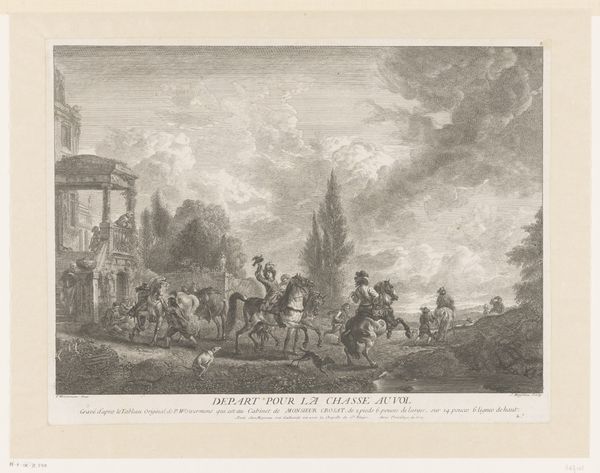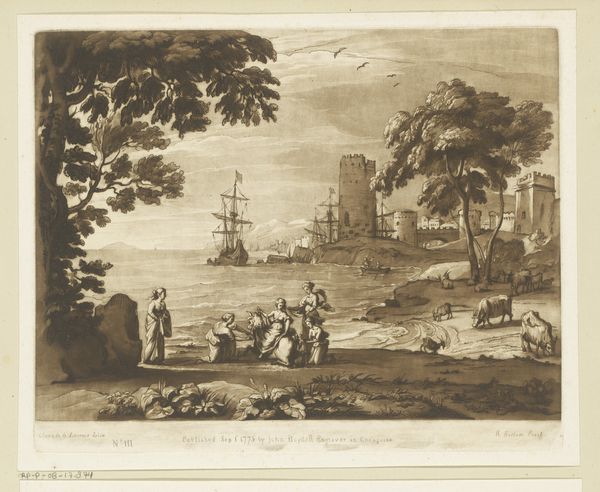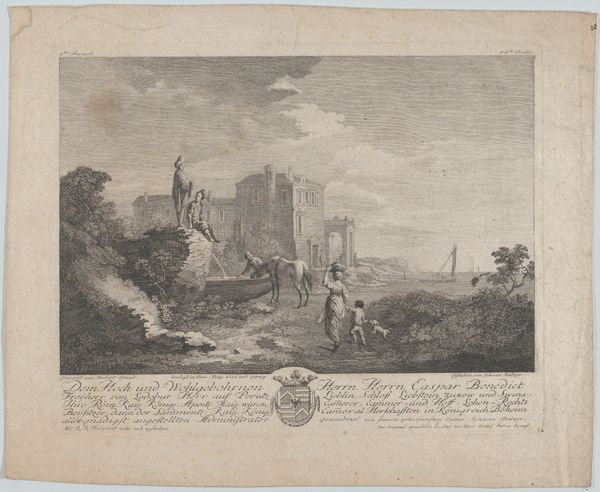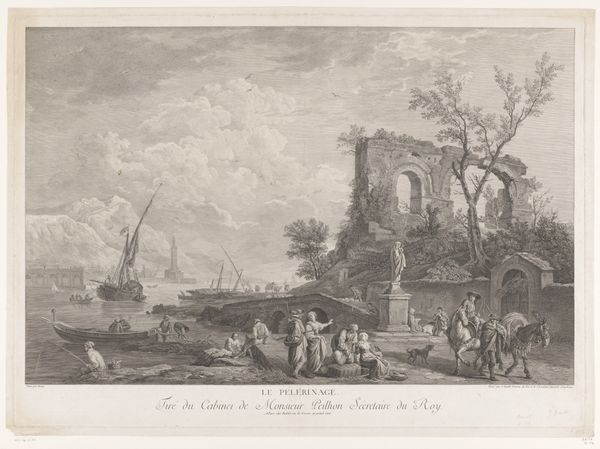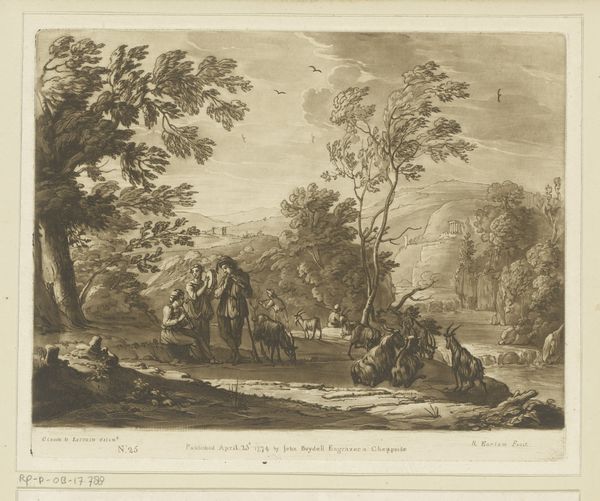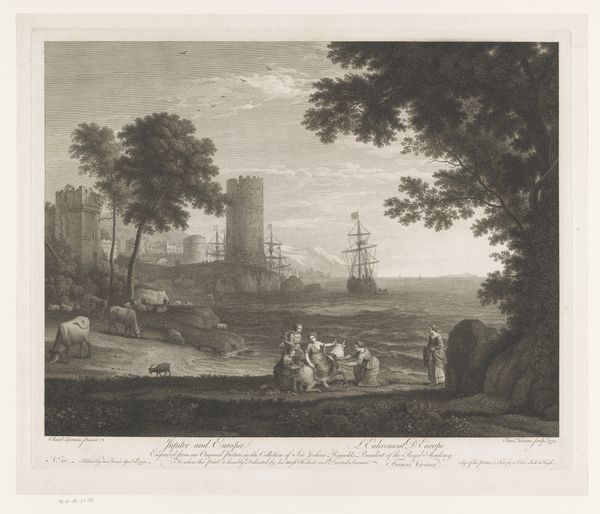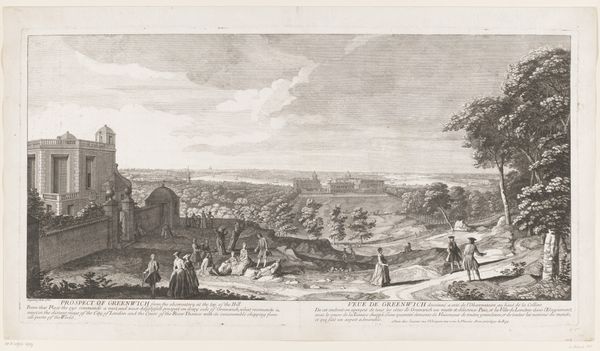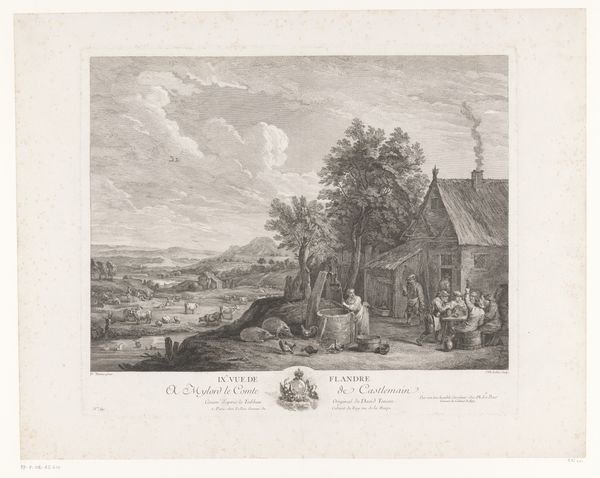
Vrijkopen van een tot slaaf gemaakte in een landschap met ruïne 1736 - 1788
0:00
0:00
Dimensions: height 550 mm, width 663 mm
Copyright: Rijks Museum: Open Domain
Editor: Here we have Jacques Aliamet's engraving, "Vrijkopen van een tot slaaf gemaakte in een landschap met ruïne", dating from somewhere between 1736 and 1788. The scene, rendered in incredibly fine lines, seems to depict the freeing of a slave. It definitely evokes a sense of both hope and solemnity. How do you interpret this work, particularly in its historical context? Curator: This piece offers a window into the complex relationship between European society and slavery during the 18th century. The engraving’s dedication to a high-ranking official—a Minister of State—highlights how the issue of slavery was very much on the public agenda. Notice how the artist juxtaposes the classical ruin with the bustling port. Editor: Yes, I see that contrast! It's like a before-and-after image. What do you mean about the issue of slavery being "on the public agenda"? Curator: It signifies the fading glory of past empires alongside the emergence of new economic systems heavily reliant on the transatlantic slave trade. Prints like these played a crucial role in shaping public opinion and disseminating ideas, albeit within the confines of existing power structures. Whose freedom are we *really* celebrating? Editor: So, the engraving isn't necessarily a straightforward celebration of abolition, but also a commentary on the economic and social realities of the time? Curator: Precisely. It’s a visual document reflecting the socio-political climate, revealing how artists engaged with controversial subjects and navigated the prevailing ideologies of their era. Editor: That’s fascinating. I had initially viewed it through a purely humanitarian lens, but seeing it as a reflection of power dynamics really shifts my perspective. Curator: It's crucial to examine how these images functioned within the historical landscape. They're rarely neutral; they often served specific purposes and appealed to certain audiences. Considering the date range you provided and its visual style, where do you think this work would fit within the context of art and social movements? Editor: Thinking about it now, I will try to ask more probing questions to understand not just the image, but also how art contributes to a broader discussion. Thanks for clarifying things. Curator: Indeed, a fruitful consideration. Every picture tells a story but the true context shapes its meaning!
Comments
No comments
Be the first to comment and join the conversation on the ultimate creative platform.

